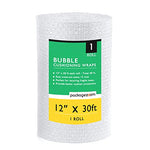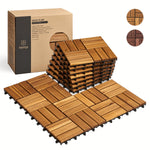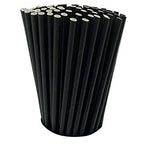You have no items in your shopping cart.
Whitetail disposal is a crucial aspect of waste management that requires responsible handling to protect the environment and ensure public safety. In this comprehensive guide, we'll delve into the intricacies of whitetail disposal, offering expert insights, practical tips, and sustainable solutions to manage this process efficiently. Whether you're a hunter, wildlife enthusiast, or simply curious about responsible waste management, this article will equip you with the knowledge to handle whitetail waste responsibly.
What is Whitetail Disposal?
Whitetail disposal refers to the process of properly handling the remains of whitetail deer, a popular game species found in many regions. When hunters or wildlife management teams harvest deer for various reasons, it becomes essential to dispose of the carcasses responsibly to avoid environmental contamination and health risks.
Understanding the Importance of Responsible Whitetail Disposal
Responsible whitetail disposal is vital for several reasons, including:
-
Preserving the Ecosystem: Improper disposal can lead to contamination of soil and water sources, negatively impacting local flora and fauna.
-
Preventing Disease Spread: Carcasses can carry diseases that may affect other wildlife or even humans if not handled correctly.
-
Public Health and Aesthetics: Disposing of deer carcasses in urban or populated areas can pose health risks and negatively impact aesthetics.
-
Legal and Ethical Obligations: Many regions have laws and regulations regarding the proper disposal of game remains to maintain ecological balance.
Safe and Sustainable Whitetail Disposal Methods
To ensure responsible whitetail disposal, consider these methods:
1. Burial
Burial is one of the oldest and most straightforward methods for whitetail disposal. Dig a sufficiently deep hole away from water sources, bury the carcass, and cover it with soil to prevent scavenger attraction and potential contamination.
2. Incineration
Incineration is an effective way to dispose of deer remains, especially in areas where burial is impractical. Controlled burning of the carcass reduces it to ashes, eliminating the risk of disease transmission.
3. Composting
Composting is an eco-friendly disposal option that utilizes natural decomposition to turn deer remains into nutrient-rich compost. This method requires specific conditions and may not be suitable for all environments.
4. Rendering
Rendering involves processing the deer carcass into useful products like animal feed, tallow, or bone meal. This method is widely used in the agricultural industry and contributes to waste reduction.
5. Natural Disposal
In some cases, nature takes its course, and scavengers and decomposers naturally break down the deer carcass. While this method requires no human intervention, it may not be suitable for all locations.
6. Contacting Local Authorities
Some regions offer specific disposal services for game remains. Contact local wildlife or environmental agencies to inquire about available options and regulations.
FAQs
-
Can I Leave Deer Carcasses in the Woods as Natural Disposal?
Natural disposal can be an option, but it's essential to ensure local regulations permit it. In some areas, leaving carcasses in public spaces may lead to fines or legal consequences.
-
Is It Legal to Bury Deer Carcasses in My Backyard?
Laws regarding burial of deer carcasses vary by region. Before burying a deer in your backyard, check with local authorities to understand the regulations.
-
How Can I Transport a Deer Carcass for Disposal?
Use a secure and covered vehicle to transport deer remains to avoid any spillage or potential contamination.
-
Are There Any Health Risks Associated with Handling Deer Carcasses?
Yes, handling deer carcasses can pose health risks, especially without proper protection. Wear gloves and take necessary precautions to minimize the risk of disease transmission.
-
Can I Use Deer Carcasses as Bait for Other Animals?
Using deer carcasses as bait can attract other wildlife, which may contribute to ecological balance. However, ensure it's legal and safe in your area.
-
What Are the Signs of Disease in Whitetail Deer?
Common signs of disease in whitetail deer include emaciation, abnormal behavior, and visible lesions. Report any suspicious findings to local wildlife authorities.
Conclusion
Responsible whitetail disposal is a crucial aspect of maintaining a healthy environment and promoting public safety. By following safe and sustainable disposal methods, we can contribute to the conservation of wildlife and the preservation of our natural resources. Remember to adhere to local regulations, prioritize public health, and respect nature while managing whitetail waste. Let's work together to ensure a sustainable and balanced ecosystem for future generations.








